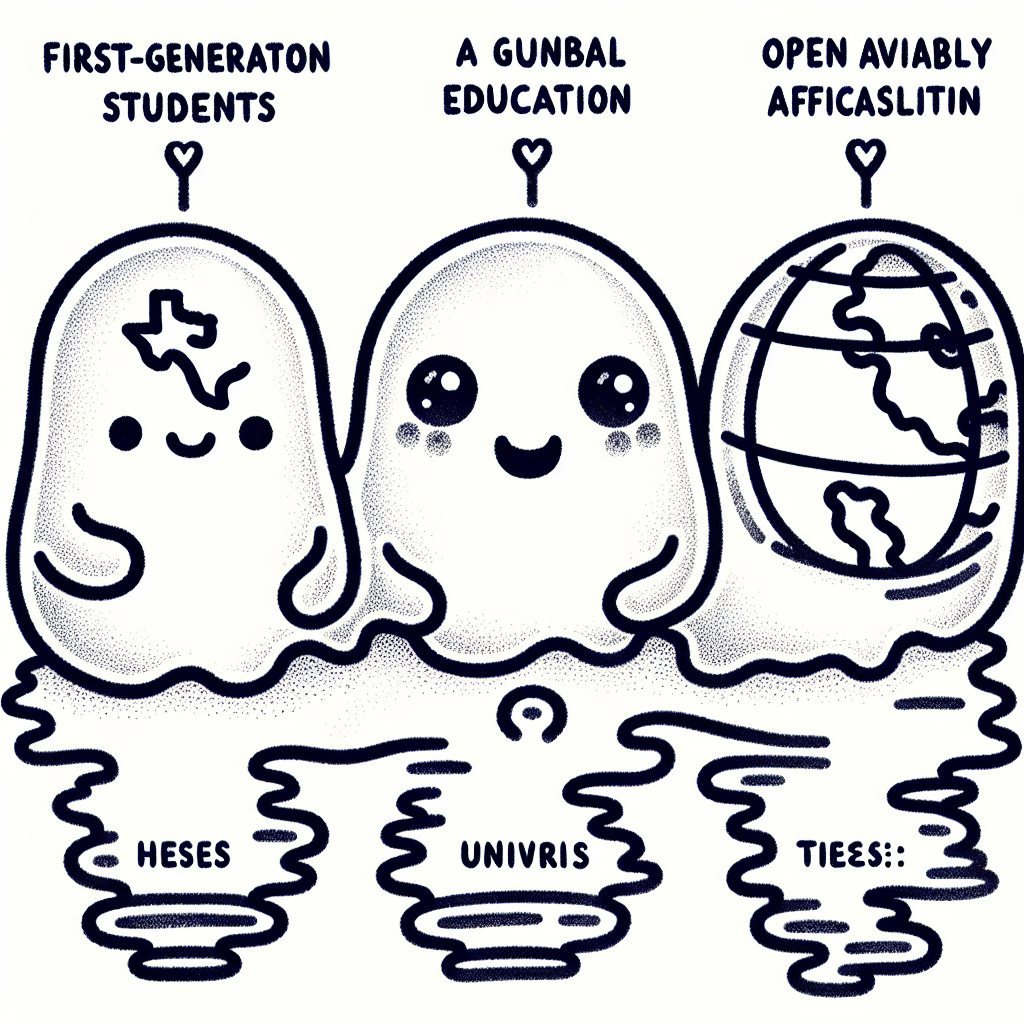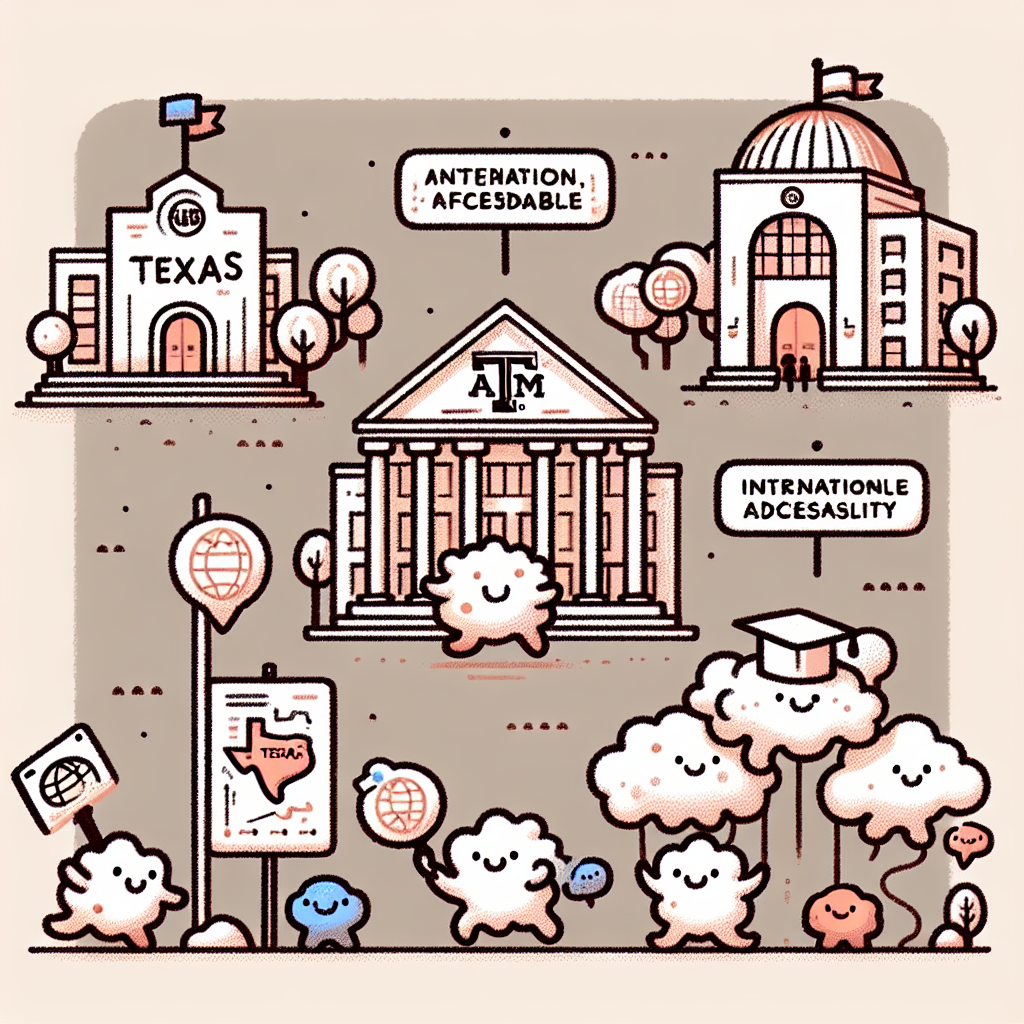Introduction
Higher education affordability is a growing concern for students and families across the United States. In Texas, where the demand for postsecondary education remains strong, finding cost-effective college options is more important than ever. The cheapest universities in Texas offer students the opportunity to earn a quality education without incurring overwhelming debt.
Affordable college options play a crucial role in expanding access to education, especially for low- and middle-income families. By minimizing tuition costs, these institutions help reduce financial barriers and support greater economic mobility for Texas residents.
Recent initiatives by the Texas Higher Education Coordinating Board and similar organizations have focused on increasing transparency in tuition pricing and promoting affordability. Tools like the Texas Public Higher Education Almanac and the College Scorecard provide valuable data on tuition rates, student outcomes, and institutional performance. These resources help students and families make informed decisions when choosing among the cheapest universities in Texas.

🏛️ Statewide Initiatives Supporting Affordability
University of Texas System's Tuition Waiver Program
Beginning in Fall 2024, the University of Texas System will implement a tuition waiver program for students from households earning under $100,000 annually (Source). This initiative represents a $35 million investment spread across its nine campuses. The program is designed for full-time Texas residents and aims to make higher education more accessible by eliminating tuition costs for qualifying students. The projected impact includes a reduction in student debt and an increase in affordability, reinforcing the UT System's position among the cheapest universities in Texas.
Texas Higher Education Coordinating Board (THECB) Tuition and Fees Data
The Texas Higher Education Coordinating Board (THECB) maintains comprehensive data on tuition and fees across public universities in the state (Source). This information, based on students taking 15 semester credit hours per term, provides insight into statewide affordability trends. Key findings indicate that while tuition has experienced modest year-over-year increases, there are significant cost variations among institutions. Additionally, regional differences play a role, with some areas offering access to the cheapest universities in Texas. This data supports informed decision-making for students seeking cost-effective higher education options.

🏆 Top Affordable Universities in Texas
University of Texas Rio Grande Valley (UTRGV)
- Net Price: $8,105 per year
(Source) - Acceptance Rate: 88%
- Enrollment: Over 31,000 students
- Features: Strong financial support programs, bilingual education emphasis, and commitment to first-generation college students
UTRGV stands out among the cheapest universities in Texas due to its low net price and extensive support for underserved student populations. Its bilingual offerings and dedication to accessibility make it a compelling choice for students seeking affordability and inclusivity.
Texas A&M International University (TAMIU)
- Net Price: $5,383 per year
(Source) - Unique Aspect: Global focus, international partnerships, and cultural diversity
- Affordability Factor: One of the lowest net prices among Texas public institutions
TAMIU is one of the cheapest universities in Texas, offering a globally oriented education at an exceptionally low cost. With strong international connections and a diverse student body, it provides value without sacrificing quality.
University of Texas at El Paso (UTEP)
- Net Price: $9,563 per year
(Source) - Acceptance Rate: 100%
- Programs Offered: Over 160 degree tracks
- Distinctive Feature: Leading Hispanic-serving institution with a focus on access and inclusivity
UTEP is recognized as one of the cheapest universities in Texas with a mission centered on educational equity. Its open admissions policy, wide array of programs, and emphasis on serving Hispanic students contribute to its strong reputation for affordability and inclusion.

💰 Comparing Tuition and Net Prices Across Texas
When evaluating the cheapest universities in Texas, it's important to distinguish between published tuition rates and the actual cost students end up paying. Understanding both tuition and net price gives a clearer picture of affordability.
Snapshot of Average Tuition and Fees (Public Universities)
According to data from the Texas Higher Education Coordinating Board (THECB), in-state tuition and fees at public universities in Texas typically range between $5,000 and $12,000 per year. Here's a general breakdown by university system:
- University of Texas (UT) System: Average in-state tuition is approximately $10,000 annually.
- Texas A&M University System: In-state tuition usually falls between $8,000 and $11,000.
- Texas State University System: Offers some of the lowest tuition rates, averaging around $7,000 to $9,000.
- University of Houston System: Ranges from $8,000 to $10,000.
These figures represent the sticker price — the amount listed before financial aid is applied.
Net Price vs. Published Tuition
Net price reflects the actual cost to the student after grants and scholarships are deducted from the published tuition. Many students pay significantly less than the sticker price due to financial aid packages. For example, a university with a $10,000 published tuition may have a net price closer to $6,000 for students with demonstrated financial need.
Financial aid varies widely across institutions and can include:
- Federal and state grants
- Institutional scholarships
- Work-study opportunities
This makes net price a more accurate indicator when comparing the cheapest universities in Texas.
Cost of Attendance Considerations
Beyond tuition and fees, students should also consider the full cost of attendance, which includes:
- Housing and meal plans: On-campus living can range from $8,000 to $12,000 annually, depending on the university and housing options.
- Books and supplies: These can add $1,000 to $1,500 per year.
- Transportation and personal expenses: Depending on location and lifestyle, students may spend another $2,000 to $4,000.
Factoring in these additional expenses is essential when budgeting for college and identifying the truly cheapest universities in Texas.

How Affordability Impacts Student Outcomes
Accessibility and Enrollment
The affordability of higher education plays a critical role in expanding access to college, particularly for low- and middle-income families. The cheapest universities in Texas help break down financial barriers, making it more feasible for students from diverse socioeconomic backgrounds to pursue a degree. Initiatives like the UT Tuition Waiver, which covers tuition for students from families earning under a certain income threshold, have significantly increased enrollment rates in underserved communities. These programs reduce the upfront cost burden and encourage participation from students who might otherwise forgo higher education.
Student Debt and Financial Health
Reduced tuition at the cheapest universities in Texas directly contributes to lower student loan debt. When students can avoid or minimize borrowing, they experience better long-term financial outcomes, including improved credit scores and greater financial mobility post-graduation. In addition, lower financial stress is linked to better mental health, allowing students to focus more on academics and personal development rather than financial survival.
Retention and Graduation Rates
Affordability also influences a student's ability to persist and graduate. Many of the cheapest universities in Texas complement low tuition with wraparound services such as academic advising, mental health support, and emergency financial aid. These supports, combined with manageable costs, contribute to higher retention and graduation rates. Financial stability allows students to remain enrolled full-time and complete their degrees without interruption due to financial hardship.

🔍 Additional Affordable Options Across Texas
Other Noteworthy Low-Cost Institutions
In addition to better-known public universities, several other institutions in Texas offer affordable tuition while maintaining solid academic reputations. Sam Houston State University in Huntsville provides competitive tuition rates and over 90 undergraduate degree programs. Lamar University, located in Beaumont, is part of the Texas State University System and offers some of the lowest tuition costs among public universities in the state.
Midwestern State University in Wichita Falls is another budget-friendly option, known for its liberal arts focus and affordable in-state tuition. Tarleton State University, a member of the Texas A&M University System, offers low tuition and a wide range of degree programs, making it a strong choice for students seeking value.
These institutions stand out among the cheapest universities in Texas due to their balance of cost, quality academics, and support services.
Community Colleges as a Starting Point
Community colleges across Texas offer some of the most affordable education options in the state, especially for in-district students. Tuition at these institutions is significantly lower than at four-year universities, making them an ideal starting point for cost-conscious students.
Austin Community College, Lone Star College, and El Paso Community College are examples of well-regarded community colleges that provide strong academic foundations, workforce training, and clear transfer pathways to universities. Many students begin at these institutions and complete their bachelor's degrees at some of the cheapest universities in Texas, minimizing overall education costs while maintaining academic progress.

Future Outlook for Affordability in Texas Higher Education
Legislative and Policy Developments
Efforts to maintain the status of the cheapest universities in Texas are closely tied to upcoming legislative and policy changes. State lawmakers have been exploring the expansion of tuition waivers and need-based financial aid programs. These initiatives aim to make higher education more accessible for low- and middle-income families by reducing out-of-pocket costs.
Additionally, there has been growing support for tuition freezes at public universities. These policies are designed to keep tuition rates stable over several years, preventing sudden increases that could price students out of attending even the cheapest universities in Texas. Another emerging trend is the shift toward performance-based funding, where institutions receive state funding based on student outcomes like graduation rates and job placement. This model incentivizes schools to focus on student success while potentially keeping costs manageable.
Institutional Innovations
To further support affordability, many Texas universities are implementing institutional changes. One such approach is competency-based education, which allows students to progress through coursework at their own pace. This model can shorten the time to degree completion and reduce overall tuition expenses.
Online and hybrid degree programs are also expanding across the state. These flexible formats lower costs by minimizing the need for physical infrastructure and allowing students to balance education with work, making it easier to attend the cheapest universities in Texas without incurring high living expenses.
Finally, partnerships between universities and local industries are playing a growing role. These collaborations often include tuition subsidies, internships, or job placement guarantees, helping students gain career-ready skills while keeping education affordable. These strategies collectively contribute to preserving and enhancing the affordability of Texas's higher education system.

Conclusion: Making Higher Education Affordable for All Texans
The search for the cheapest universities in Texas reveals several institutions that balance affordability with quality education. Schools like The University of Texas Rio Grande Valley and Texas A&M International University consistently offer low tuition rates while maintaining strong academic programs and student support services. These universities often feature robust financial aid packages, in-state tuition benefits, and lower living costs, making them attractive options for budget-conscious students.
Continued investment in accessible higher education is essential for economic growth and social mobility across the state. By funding need-based grants, supporting community colleges, and expanding online education, Texas can ensure more students have access to affordable degree pathways.
Students can take practical steps to minimize their college expenses. First, apply early for financial aid through FAFSA and explore state-specific grants and scholarships. Next, compare net prices—not just tuition—by considering housing, fees, and available aid. Finally, choose a school that aligns both with your academic goals and financial capacity to avoid excessive student debt.
By focusing on affordability, transparency, and support, Texas can continue to provide high-quality education that meets the needs of all its residents.

📚 Citations
- University of Texas System Tuition Waiver Program – This source highlights tuition waiver initiatives that contribute to making some of the cheapest universities in Texas more accessible to low-income students.
- Tuition and Fees Data from Texas Higher Education Coordinating Board – Provides official tuition and fee statistics for public institutions across Texas, offering a factual basis for identifying the cheapest universities in Texas.
- UTRGV Affordability - BestColleges – Details how the University of Texas Rio Grande Valley ranks among the cheapest universities in Texas due to its low tuition and strong financial aid offerings.
- TAMIU Cost Efficiency - BestColleges – Highlights Texas A&M International University’s affordability, supporting its inclusion on lists of the cheapest universities in Texas.
- UTEP Accessibility - BestColleges – Describes the University of Texas at El Paso’s low tuition rates and broad accessibility, reinforcing its status as one of the cheapest universities in Texas.














